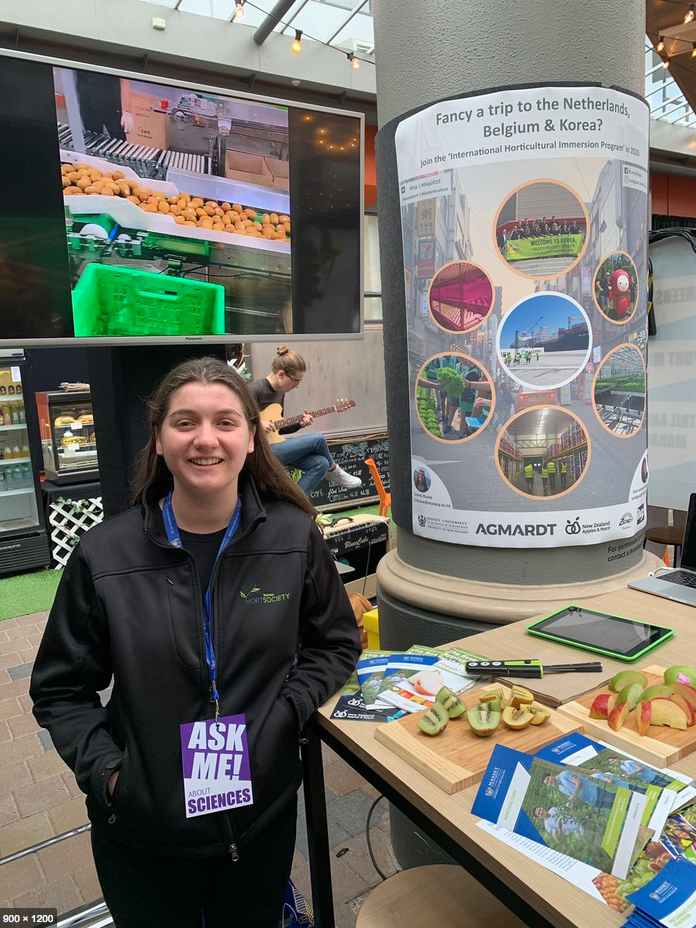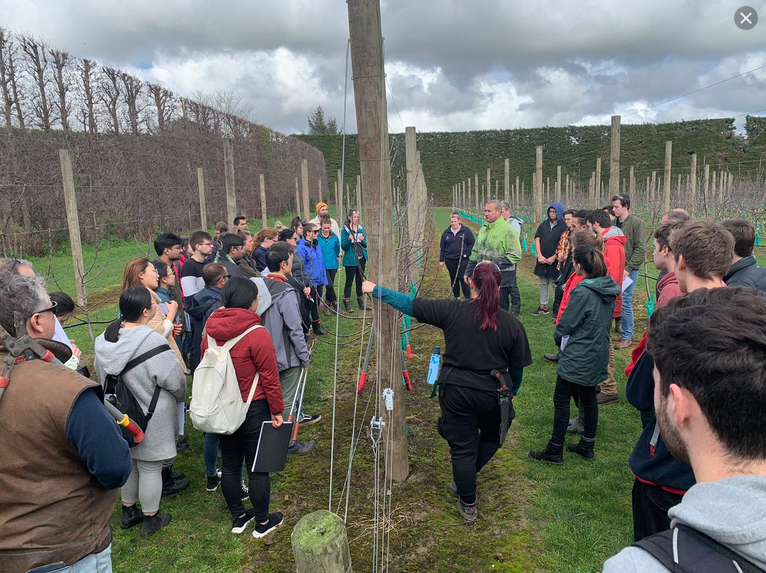IHIP Reflections Series: Challenging the status quo of the New Zealand Primary Industries’ structure
Alex Tomkins is a 2nd year Agri-Commerce student at Massey University majoring in International Agribusiness and Trade with a minor in Horticulture. She is also the Vice President of the Massey Horticulture Society.
After a week experiencing the horticulture industry in the Netherlands and Belgium, I have continued to be amazed by the innovation, collaboration, and efficiency of the industry. By gaining insight into leading horticulture innovation countries, you are able to grasp the scale and sophistication of the global horticulture industry, something that can’t be taught in a lecture theatre. This is what the international horticulture immersion program (IHIP) gives young, aspirational people like me. The Netherlands and Belgium are both small countries by land area with high population densities compared to New Zealand. With limited land and resources for production their agribusiness value chains are incredibly efficient to maximise productivity and return for growers. From plant breeding to world-leading horticultural robotics and engineering, the Netherlands and Belgium are constantly evolving and working out the solutions for their future challenges.
New Zealand horticulture remains competitive today based on our natural resources for competitive advantage and people capabilities. However, our investment in innovation is lacking, something that is vital for the future of the industry to remain globally competitive. With increasing production and demand for New Zealand horticultural products, the future of the industry is bright. However, we have significant challenges to work through for the future success of the industry. When visiting REO Veiling food auction in Belgium we saw how the co-operative for more than 2,900 shareholders and 1000 active producer works to provide growers and buyers with a price based on the supply and demand of the market. The collaboration of the co-operative system gives more market power to the producers, of great contrast to the increasing power of retailers in New Zealand. In addition, the economic mechanisms of supply and demand in the auction system gives producers a clear idea of what the market wants and improves communication between retailers and producers. The Belgium auction model also allows growers to take advantage of higher prices in the market, something the reasonably fixed price model in New Zealand horticulture does not allow for.
Research and development are vital for industry innovation. However, funding research is pointless unless the discoveries are translated into practical and technical advice for all growers to use. In Belgium, the Government funds advisory and research centres such as InAgro in West Flanders. InAgro works as a bridge between Government funded research and the farmers. They take findings from research and then provide farmers with free technical information, providing the service of non-biased commercial farm consulting at the market rate. InAgro facilitates the collaboration and exchange of knowledge between farmers. Whereas, in New Zealand our model of privatisation and government funding for research hasbeen a catalyst for our lack of collaboration in regard to innovation. We are too scared to share information due to IP and trying to be diversified from our competitors. What if New Zealand collaborated, communicated, and shared our innovations? In the Netherlands, one company’s philosophy was ‘we share our research findings with our competitors because we are already working on the improved version’.
The IHIP global study tour has led me to question, is the current industry model in New Zealand the most efficient? By challenging the current horticulture price and Government funding structure we could create a more collaborative and innovative industry, one that will be able to compete in an increasingly competitive global market. We need to challenge and change our industry before export markets and overseas competitors do. The European horticulture industry should be a benchmark and goal for the future of New Zealand horticulture. However, working towards a transparent industry similar to the Dutch and Belgium models can only be done by improving our current primary industries business structures and challenging the status quo.
Alex Tomkins
This blog post was written as part of the recent IHIP programme sponsored by FoodHQ.


